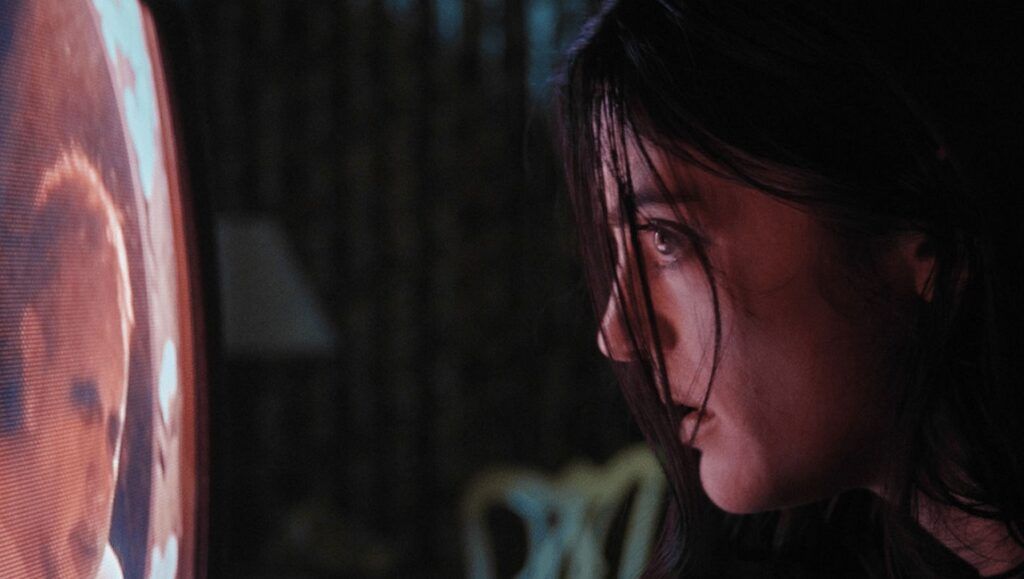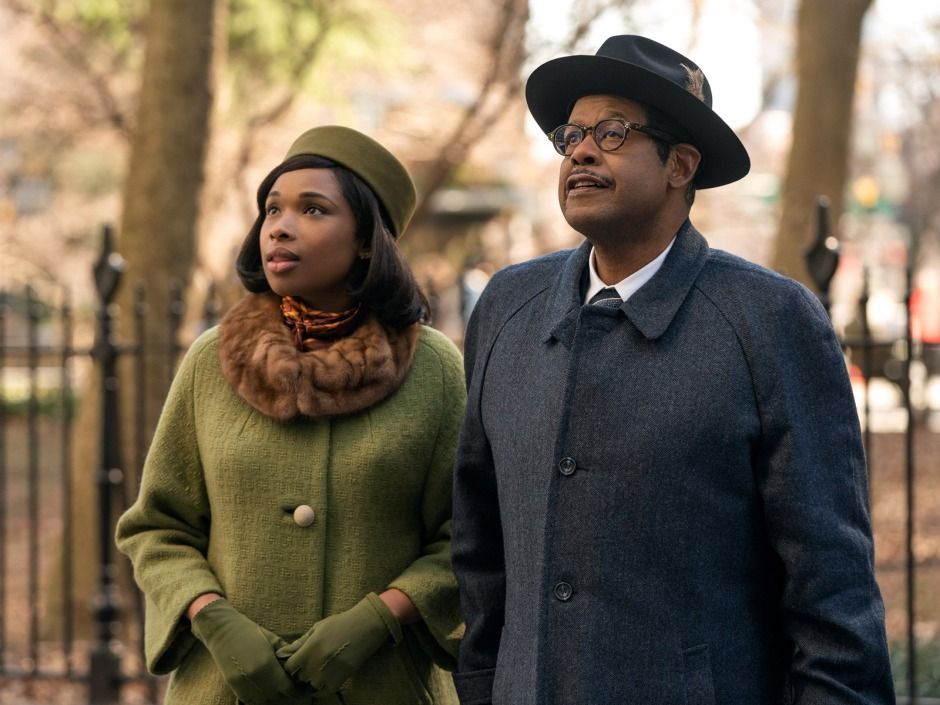Before We Vanish | November 2021: Isolation, Evening at the Eagle Inn, Beans
OK, therefore things don’t actually vanish anymore: even probably the most limited movie release will (probably, eventually) find its method onto some streaming services or into some Digital video disc bargain bin let’s assume that those remain by enough time this sentence finishes. Put simply, while the name of In Evaluation Online’s monthly feature specialized in current domestic and global arthouse releases in theaters will ideally bring focus on a deeply underrated (also by us) Kiyoshi Kurosawa movie, it isn’t an ideal title. Nevertheless, it’s constantly smart to catch-up with movies before some… other activities take place.
Isolation
Isolation , a horror anthology co-created by James P. Gannon and Nathan Crooker, is constructed of nine shorts developed and occur life through the pandemic. They’re mainly lifeless on arrival, though, because the anxieties and terrors that described the past 2 yrs are so acquainted and recently lived-in these shorts experience shallow in comparison. The initial movie, Larry Fessenden’s Fever , proves a good opener since it makes obvious the low-budget character and peculiar situations of filmmaking by displaying shots of empty metropolitan areas. As a guy becomes delirious, stop-motion can be used to unsettle and disorient, but it’s utilized as well infrequently and without significantly purpose beyond being truly a signifier of disposition. Even worse are usually the depictions of the stifled time; a go of New Yorkers banging on pots outside their home windows serves as little a lot more than an announcement of a desire to have neighborhood. That the narrator after that directly explains this notion is regrettable spoon-feeding.
Like superficiality is continually on display. Each one of these shorts, for example, are usually prefaced with the title of a city. Achieving this rather than showing the film’s name is really a befuddling move, only a small amount distinguishes these movies by their location. You can argue this maneuver is intended as a signpost for the universality of the pandemic knowledge, but that could require significant throughlines that link movies together. Certain shorts have a look at conspiratorial attitudes, for example, but they’re laughably unrealistic concerning feel both less exciting and terrifying than understanding such people in true to life. Andrew Kasch’s 5G comes with an exaggerated script which makes the brief read like unintentional humor actually during its intentionally amusing occasions, while Alix Austin & Keir Siewert’s It’s Inside will be delightfully bloody but nothing else, utilizing the protagonist’s loony logic being an easy route toward a grisly climax. There’s no insightful commentary, nor may be the personality fleshed out good enough to become a captivating windowpane into like self-destructive mentalities, but at the very least offers possibility to gleefully wince.
Probably the most unforgettable passages in Isolation are usually the ones that catch some semblance of environment. Alexandra Neary’s Homebodies utilizes found footage for efficient times of trepidation, but that’s a consolation prize for a tale that doesn’t meaningfully create on a premise concerning a company’s voracious dependence on exciting news tales. Kyle I. Kelley & Adam R. Brown’s Meats Fingers and Zach Passero’s Gust are usually fine, only if because their calm explorations of loneliness are usually comparatively innocuous. But generally, these movies struggle in ways that’s typified by Bobby Roe’s Pacific Northwest, which follows two children because they make an effort to survive escaped convicts; the brief hobbles along inelegantly with pushed occasions of suspense. Isolation in no way will get past its gimmick, as contrived premises are usually shoehorned and introduced without nuance, failing woefully to capture any true emotions or experiences linked to lifestyle in lockdown.

Credit: 1091 Photos
Night time at the Eagle Inn
Brothers Erik and Carson Bloomquist could just be the hardest functioning filmmakers in present business at this time, and you have never also heard about them. Their latest function, the thriller Evening at the Eagle Inn , will be their third movie to be launched in 2021, that one coming mere days after their final venture, Xmas on the Carousel . (Why the Xmas movie premiered before Halloween, and the horror one after, is really a issue for another period.) Erik takes single directing credit right here, while both brothers talk about writing, editing, and creating honors. Commonalities between their movies include 70-moment running times, single places, and a small number of cast members. You can just imagine the budgets for these tasks are minimal at greatest, and the mere proven fact that they are obtaining distribution to wider viewers will probably be worth celebrating. Whereas their intimate drama from previously this season, Weekenders , proved a welcome diversion because of its low-essential naturalism and delicate charms, Night time at the Eagle Inn will be another beast completely, a horror flick where two fraternal twins, Sarah (Amelia Dudley) and Spencer (Taylor Turner), happen to be the titular abode in the snowy mountains of Vermont hoping of finding solutions regarding their moms and dads’ long-ago disappearance, but rather discover literal hell on the planet. One can’t assist but end up being reminded of both The Shining and The Innkeepers as different supernatural events unfold, which includes disembodied voices echoing through empty hallways, furniture that progresses its, and static-ridden tv’s that screen disconcerting imagery of dastardly deeds (okay, that could be more The Ring there).
But Bloomquist is not any Stanley Kubrick – hell, he could be no Ti West – and what results is really a seriously stupid thriller completely without thrills. So much essential plot information is shipped in artless exposition dumps, as the “spooky” cinematography includes nothing more than several Dutch angles plus some various shaded lighting. The rating is indeed generic that it actually sounds like among those Halloween stations that pop-up on Spotify every October, a variety of apparent synth and sharpened strings. The acting will be proficient in its best times, outright embarrassing at additional periods – Greg Schweers, appearing because the Night Manager, produces major “Supper Theater Jack Torrance” vibes, although his enthusiasm will be, at the minimum, valued. It doesn’t have a bundle to scare viewers, as movies like The Blair Witch Task and Paranormal Action have produced abundantly very clear, but everything here’s so derivative and, to be honest, boring, as though everyone involved was simply going right through the motions. Maybe there’s grounds why nearly all filmmakers don’t undertake multiple tasks within the period of per year; Evening at the Eagle Inn will be nothing or even a definitive indication of burn-out. Go on and have a breather, Erik and Carson – you’ve earned it, not surprisingly latest dud.
Coffee beans
It wouldn’t be considered a film festival minus the requisite, ham-fisted coming-of-age group drama, and for the 2020 Toronto International Movie Event, Tracey Deer’s Beans comfortably fits the costs. Set through the 1990 Mohawk uprising in Quebec, the movie comes after an Indigenous twelve-year-old girl nicknamed Coffee beans (Kiawentiio Tarbell) who’s caught in the center of a conflict between descendants of whitened settlers and the initial Nations those who are protesting their sacred property getting bulldozed for a course. Because the uprising turns violent, Coffee beans is pressured to navigate her harmful newfound actuality with her dad on leading lines, while at the same time getting swept up with a brand-new group of close friends, forcing her to cultivate up all prematurely.
Despite its timely subject material, the coming-of-age tale at the primary of Coffee beans feels distinctly too familiar, counting on exhausted tropes of adolescent rites of passage established against a groundbreaking backdrop. Even though there are usually parallels between your Indigenous uprisings in Quebec in 1990 and present anti-fascist actions happening all over the world – the crisis at Position Rock can be an obvious comparison, however the film’s spiritual middle easily reaches include Black Lives Issue protests, amongst others movements – Coffee beans is frequently marred by an anemic script, amateur performances, and Deer’s awkward feeling of pacing. The movie even bungles its tries to determine rapport between characters in early stages by counting on hyperbolic laughter to punctuate actually probably the most mundane activities, an ungainly try to establish comparison with the vile shows of racism and violence that they can all encounter by the finish. Unfortunately, these make hardly any impact due to Deer’s use of information footage from enough time, the harrowing immediacy which outshines the comparatively stiff reenactments.
Coffee beans definitely has its center in the proper place, supplying a fly-on-the-walls appear at Native struggles when confronted with institutional colonialism, nonetheless it shows neither the polish nor the spectacular bonafides to accomplish this type of serious topic. A lot more egregious, Deer does not make her heroes either charming or unforgettable, a fatal mistake for a coming-of-age group narrative attempting to make use of a child’s viewpoint to guide audiences by way of a historical event. The outcomes are usually oddly listless and significantly inert, departing the unfortunate impact that the Mohawk uprising and its own enduring legacy should have a movie that offers a lot more than great intentions. [Originally published within TIFF 2020 – Dispatch 6.]

Credit score: Samuel Goldwyn Movies
She Paradise
Shed in the anonymous aesthetic swarm that’s electronic, independent filmmaking, She Paradise , directed by Maya Cozier, oscillates between trope then one even more benevolent, before abruptly undercutting its noiseless subterfuge of allied perseverance for the muddled politic. The function adaptation of a brief film by exactly the same title, we follow Sparkle as she contends with her conflicting wishes for dancing, material sustainability, and reference to others (both kin and newfound friendships). We have been extremely pointedly guided through the unobstructed sightlines of a plot that shepherds her directly into the lion’s mouth area: music video makers and musicians ogling her for both her attractiveness and how she enacts agency by way of a actual physical sensuality in her choreography. And in reality, it’s the manner where personas perceive this gesticulation – literal and figurative – where in fact the film most regularly falters.
This eroticism of motion, as presented through dancing, is provided the shortest stick of all film’s existing facets, a most likely sticking point for audiences (i.electronic. this critic) with a reverence for this type of dedication to the physical. Adding to these problems is really a sound style that often dissipates in to the history: there’s the stomp and clap of bodies astray within intangible and dimensionless soundscapes, monopolized by an unsynced songs track. The cutting round the dancers is also often arrhythmic, neither in tune with dancing or music, generally obscuring the momentum of pounds positioned into each movement. It’s a shock because also the precedent brief captured the tactility of the diegetic texture, this echo that reverberates as a feet meets the ground, as thighs slap the wooden during splits. Without this fixation on the bodily evocations of the dance, what’s the film likely to anchor itself to? Personality? Sparkle, unfortunately, is really a stand-in for the concepts many before her possess represented, and several after will emulate. And much more perplexing may be the film’s last shot, where money appears to become a reconciliatory materials in the wake of trauma. It’s a hardcore sell to get in cash the semblance of empowerment, and definitely not from the violence and exploitation it is due to, as an abuser presents his victim an apology, or transaction, or hush-hushing. The final frame is really a smirk, but it’s nevertheless unclear where it originates from and just what it signifies? The semiotics around it are baffled, leaving the movie in circumstances of floundering, gasping for something to call objective.
Kurt Vonnegut: Unstuck with time
In 1982, a Robert B. Weide wrote to his literary idol with a proposal for a documentary. Twenty-five many years later, the article writer Kurt Vonnegut died because the consequence of a head damage – he was 84 yrs . old, and, carrying out a traumatic profession in the U.S. Army during World Battle II, spent 50 yrs writing, eventually getting probably the most ubiquitous brands in American literature. So that it goes. In the years between these activities, Weide and Vonnegut created a deep and uncommon friendship that ultimately became woven in to the material of both artists’ function, and led to Weide’s long-awaited documentary, Kurt Vonnegut: Unstuck with time.
The documentary proceeds in mainly linear fashion, adhering to Vonnegut’s childhood, his time at battle, and his writing profession, and had been it not really for Weide’s existence and phenomenal accessibility, the film may possibly have not really been any longer remarkable when compared to a simple A-to-B biography. Weide himself actually bemoans the cliché of the filmmaker who will become a part of their own documentary, but right here it really is an inextricable element, as instrumental to the movie as Vonnegut himself, and doesn’t run into as also vaguely gimmicky. Weide, because the fanboy turned buddy, becomes the emotional primary of the movie, and his adoration of Vonnegut is usually seriously felt. Weide’s unprecedented degree of access supplies the film having an intimate appearance at Vonnegut, delving into both his public encounter and the very actual grief and trauma behind that self-image. The movie isn’t limited by mere speculation, with stark occasions of contrast taking middle stage – one especially affecting pairing may be the laughing, morbid Vonnegut joking concerning the ignoble deaths of his wartime comrades towards the writer solemnly discussing the loss of life of his much loved sister, all feeling of darkish humor vanished. It’s a pressure that inhabits Vonnegut’s function, and Weide displays it flawlessly, probing behind the curtain in to the way to obtain his iconic satirical sensibility.
Despite Weide’s valid concerns on the friendship intruding on the movie, it really is exactly this stress that retains the documentary riveting. Weide leans in to the tension, refusing to split up the artwork from the performer both narratively and visually, stylishly merging Vonnegut’s illustrations with intimate home movies, and thoroughly examining the coexistence of Vonnegut’s personal and innovative lives. Given his intensive personal relationship along with his subject matter, it’s a testament to Weide’s creative integrity that Unstuck with time remains therefore impartial, dealing with its issue with empathy and compassion, but in no way indulgence. The movie is equally as comfy admitting that Vonnegut had been usually an absent or intimidating dad figure as it will be venerating his creative genius and the enjoy and fondness with which his kids keep in mind him. As a portrait, Unstuck with time will be unafraid to be entire, and regardless of the film’s intense private inflection, never acts as apologia for an undeniably challenging guy.

Credit: 1091 Images
Clerk
For film nerds of a particular age, the tale of Kevin Smith and his 1994 debut movie, Clerks , may be the things of legend. Arriving on the heels of breakout indie successes from Tarantino and Linklater, Smith had been, in accordance with who you questioned, the brand new John Cassavetes, the heir obvious to Jim Jarmusch, or perhaps a potty mouthed, Gen X Woody Allen. Smith was also “among us” – the schlubby, over weight geek who managed to get. The brand new documentary Clerk . can be an exhaustive, and exhausting, summary of Smith’s entire profession, touching briefly on all of his feature movies along with his many podcasts and talking engagements. Everything culminates with Smith and longtime buddy and collaborator Jason Mewes getting superstars on the Hollywood Stroll of Fame, a symbolic validation of Smith’s storied, love-hate background with the popular.
Director Malcolm Ingram , a longtime Smith associate, opts right here for the easiest, least demanding structure because of this filmed hagiography: a linear, chronological order. Following a short intro that recounts Smith’s childhood and spiritual beliefs, Clerk . retells, for the umpteenth period, the genesis of Clerks and the shockwaves it delivered through the event circuit. Linklater and Tarantino pop-up in brief talking mind interviews extolling Smith’s genius, while Smith himself will be readily available to essentially narrate their own tale. After being provided carte blanche from the studios for his 2nd function, Smith hits a solid wall with Mallrats . This results in some strong soul-searching and a go back to his indie roots as Smith scrounges upward money to create Chasing Amy , heralded as a “go back to type” by the critical neighborhood. On and on the documentary will go, giving a brief history of each Smith film, introducing several interview subjects to speak about it, and punting back again to Smith for some sort of last summation. Anything of specific interest is either hardly touched upon or glossed over completely – Smith’s acknowledgment that a lot of his achievement came as a result of convicted rapist Harvey Weinstein is usually allotted the same quantity of pounds as Smith praising the virtues of the NORTH PARK Comic Con. A remarkable chapter of Smith’s profession requires a weird detour known as Red Condition ; there’s footage right here of Smith premiering the horror movie at the 2011 Sundance Film Fest and getting ready to auction it off to a distributor before revealing that he’s in fact distributing it himself, within an elaborate cross-country touring road present. It had been a premeditated publicity stunt that possibly burned plenty of expert bridges which Clerk. gifts as a cheeky prank rather than potential profession suicide.
Everything feels like a more elaborate DVD additional, albeit one with practically unlimited usage of the man himself. As a whole, Clerk. raises a significant issue that it can’t actually answer: Who specifically is this movie for? Too much time and as well enamored with minutiae for an informal viewer, one might think about an endeavor such as this as a “for supporters just” affair. But Smith’s legions of admirers understand all this stuff forward and backward. Smith himself has informed these anecdotes numerous times, especially in his several An Evening With… DVDs. There emerges a conflicting portrait of a guy who craves attention, usually tailoring his movies to interest a mainstream viewers, and lashes out at critics and followers who won’t embrace his even more outlandish proclivities. Neither Smith nor the film actually digs into this seeming contradiction, and will be poorer for it. Latest duds like Tusk and Yoga exercises Hosers are usually commented upon completely as positive experiences, an opportunity to goof around with relatives and buddies while making a film. A noble more than enough sentiment, but the one that enables Smith and his decision-making procedure off the hook. These movies aren’t failures, at the very least not really in the insular planet of Kevin Smith. They’re successes because his spouse and kid had enjoyable on set. Eventually, Clerk. feels as though a testament to Smith from Smith, a like letter to himself. That could be all well and best for anyone currently in the tank because of this once fascinating filmmaker, but it’s not really particularly illuminating for ordinary people.
Harmful
When talking about Harmful , it’s difficult never to make the most instant Die Hard reference once the movie, itself, seems comfortable sufficiently luxuriating in that extremely pastiche. Like several a mimicry that emerged before, that one lazily presents us some exposition that will justify all of the subsequent gun-toting confrontations: particularly, regarding a mystical treasure lurking someplace on a mystical island, where friends and family have collected for the mystical funeral of a guy who has no cause to be lifeless. Scott Eastwood will take the business lead and executive producer place right here, providing us a space-cadet, wide-eyed killer attempting to reform his antisocial character disorder through breathing workouts and depressants.
Harmful will be directed by David Hackl, who, after some yrs divided from his Noticed installment, has devoted his filmography to these languid reappropriations of ‘80s activity tropes. And these movies seem to focus on a plateaued creation structure: recognizable title in the front chair, surrounded by bit gamers of little to specialized niche familiarity, capped off with a particular appearance function by iconic personalities: from Billy Bob Thornton to Richard Dreyfuss to Mel Gibson. You can arguably observe this constant corporation of productions, extrapolate small to nothing at all from these shoddily come up with, straight-to-DVD aesthetics, and arrived at the final outcome that, maybe, these movies are a top for some sort of tax shelter. Needless to say, this is only a silly assumption, provoked by way of a silly movie that seems made and then purposefully vanish from, not the cultural memory, however the cultural periphery. No-one wants to be right here, and everyone appears to be holding back again fun that’s threatening to burst through the seams of the gobbledygook austerity caked onto this meandering flaccidity. Nothing harmful to see right here .




Recent Comments